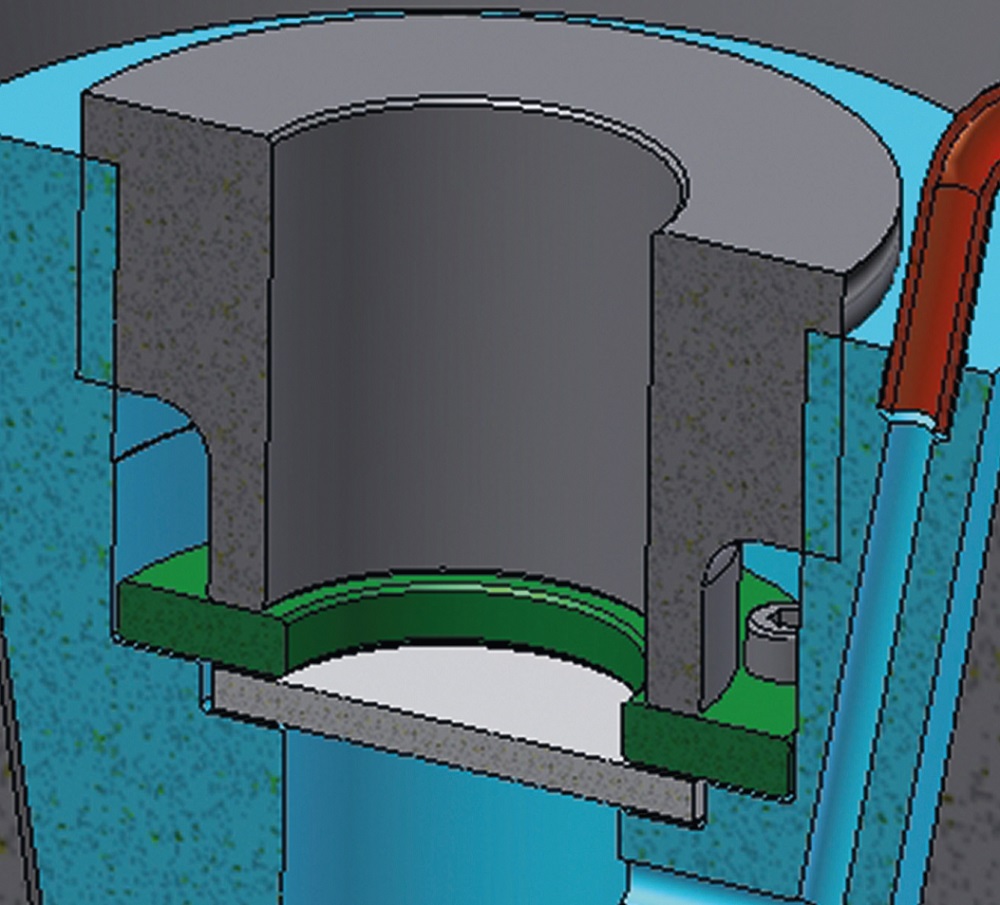

For a number of applications in smelting, diaphragms are used, e.g., to enable pressure compensation in hollow cavities in components while preventing filling of the cavities with the molten material.
A current example is use in hollow rollers in hot-dip finishing plants, where the rollers turn and guide flat steel bands through a molten bath of a liquid zinc- or aluminum-based alloy. Hollow rollers show a lower mass moment of inertia, enabling higher band speed, less roller wear, and higher steel band surface quality. However, they are also subject to a risk of excess pressure building up in the inner space due to gas expansion during or after dipping of the roller into the melt bath. Undesired deformation or, in the worst case, bursting can result.
In a joint cooperation with an industrial partner, Fraunhofer IKTS has been developing a new gas-permeable ceramic for appliances in metallurgy and the metal processing industry to solve the instability problem in hollow rollers. A small disk made of this ceramic is inserted into the hollow journal of the roller, releasing the expanding gas from the roller into the melt. The ceramic is hardly wetted by the melt and pores are small enough to allow gas to permeate but prevent intrusion of the melt, even at high melt pressures. With the help of this porous ceramic, gas can be discharged quickly and overpressure in key functional components can be prevented.
In this application, the ceramic withstands the melt pressure exerted by aluminum and zinc at 680 °C and 480 °C, respectively, at a bath height of 2.5 m. The impermeability of the ceramic for the molten metal reliably prevents penetration of the molten metal into the component and guarantees controlled gas release and pressure reduction. The ceramic is also heatresistant up to 1200 °C in air and resistant to corrosion by light metal melts. Therefore, the proven principle can be applied to other alloys after preliminary testing.
Additionally, a steel mounting device for securing and sealing of the porous ceramics in the hollow roller was developed. The porous ceramic disk can also serve as an active safety device that acts as a rupture disk in case of an extreme pressure increase, preventing deformation or even bursting of the hollow roller by guiding the gas into the environment.
The innovative porous ceramic has already been successfully tested in lab and industrial environments.
Services offered
- Development of materials and technologies for manufacturing and application of porous ceramics in contact with molten metal alloys